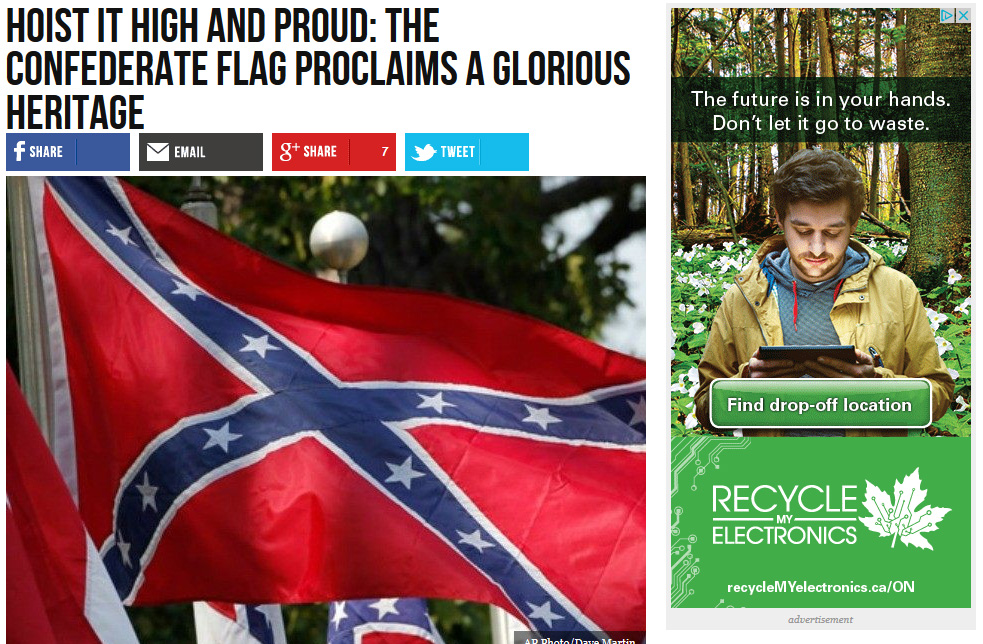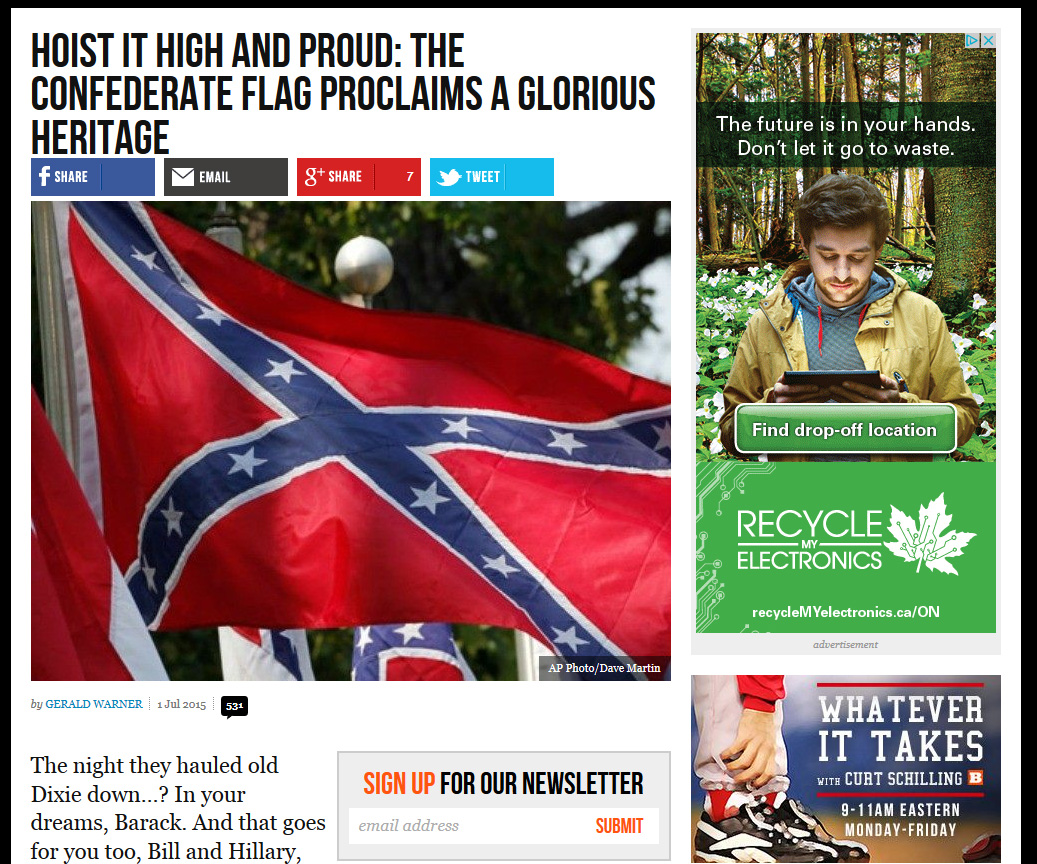Before he murdered nine people at a historically black church in Charleston, S.C. in June of 2015, Dylann Roof posed with a gun in one hand and the Confederate flag in the other.

It wasn’t the only image of Roof with the flag.
And in the aftermath of the killings, it seemed to many in the South (and elsewhere) that a symbol of white supremacy, carried first by men who were fighting to defend slavery, then as a symbol of the white backlash against the civil rights movement, then by a white-supremacist mass murderer, shouldn’t be flown by government institutions — or ideally by anybody.
Then-president Barack Obama agreed, saying that the Stars and Bars “belongs in a museum.”
The flag had flown at South Carolina’s state house since 1961, when the civil rights movement and its opponents were battling over voting rights and segregation.
READ: Fake news: Why does this simple Google search autosuggest a neo-Nazi site?
Legislators at the time were very clear that it was an unapologetic symbol of white supremacy.
“It has been revealed time and time again that advocacy by Communists of social equality among diverse races… is the surest method for the destruction of free governments,” segregationist Sen. Strom Thurmond said at a ceremony at the time. Nowhere in the U.S. Constitution, he added, “does it hint a purpose to ensure equality of man or things.”
Ten days after the shootings, activist Bree Newsome, tired of the slow debate about what to do about the flag, scaled the pole and took it down herself:

Get daily National news
A few days later, Breitbart News (at the time still run by Steve Bannon, now chief strategist in Donald Trump’s White House) published an angry defence of the Confederate flag and what it stood for — except for that whole awkward slavery business.
“The liberals feel they are on a roll, having trashed states’ rights by railroading compulsory acceptance of homosexual marriage through the Supreme Court,” Gerald Warner wrote. “Now, they feel, is the time to airbrush out of history every tradition that is an obstacle to their new, rootless, alien society based on intolerant political correctness. The epitome of everything they detest and fear is the Confederate flag, so that is now the target of a hate campaign so fanatical and irrational as to seem barely sane.”
READ: Ms. World beauty queen says ‘fake news’ site stole her image to create right-wing persona
It goes on in much the same vein.
You can read the piece now if you like — along with an ad for Ontario Electronic Stewardship, a Mississauga, Ont.-based organization that helps recycle used electronics.
As you might have guessed, they had no idea where their ads were appearing until we called them.
“It’s not a place where we would advertise, if it has any kind of degrading information,” said spokesperson Amy Victoria. “We attempt to put parameters in place to make sure that doesn’t happen. We don’t want to support anything that puts down anyone at all.”
“I’d like to be on the phone in a couple of minutes to make some changes.”
Victoria said it seemed to be a ‘retargeting ad,’ which follows you from a site you’ve clicked on to appear in other contexts.
READ: Exciting? Sure. Staged? Maybe. What a grainy video’s murky origins tell us about fake news
“If you’ve been on a site where you were shopping, that shopping site would show up on something else you were reading — maybe Facebook.”
Brietbart’s front page, at the time we viewed it, also had a prominent ad for the Royal Botanical Gardens in Burlington, Ont.:
“We haven’t encountered that issue,” said RBG spokesperson Nick Kondrat. “Obviously you don’t want your brand associated with something that doesn’t share the same values as your organization.”
In a subsequent e-mail, Kondrat wrote, “We don’t see this as a major issue as reflecting poorly on the RBG brand.”
In a 21st-century online ad market based on automated ad-buying, brands often have no idea where they’re advertising.
Mostly that’s fine, but often it’s not.
The activist group Sleeping Giants has had some success in contacting companies that unwittingly advertise on Breitbart and asking them to boycott the site. (Recently it’s emerged that ads appear regardless on sites that companies meant to boycott — turns out that making a boycott stick is more complex than ad agencies realized.)
READ: Fake news: No, strangers can’t find you on Facebook by taking pictures of you on the street
On the other hand, U.S. bank JPMorgan Chase, weary of having its ads appear on fake-news sites, cut the number of sites it advertises on from 400,000 to 5,000 that the bank pre-approved after having a thorough look at them first. The bank saw no difference to either the cost of advertising or its results.
READ: Fake news: Not just for conservatives any more
In fake-news news
- Fake news has ruined a lot of things, including April Fools — newspapers in Sweden and Norway are skipping it this year, concerned it will damage their credibility.
- Jim Dowson, a pro-Russian millionaire who has backed far-right causes in Britain for years, says he will turn his Eastern Europe-based online media empire to the cause of Scottish independence. (Confusingly, Dowson is a strong supporter of Northern Ireland staying in the U.K.) “This is a global network that I believed helped elect Donald Trump and backed Brexit to win,” he told The Guardian. “The [Scottish National Party] will hate it that I am involved, but I am not interested in what the SNP says.”
- Democratic Sen. Mark Warner cited reports this week that 1,000 Russian trolls worked full-time on influencing the U.S. presidential election, focusing on swing states. Warner claimed that the trolls focused on Wisconsin, Michigan and Pennsylvania, states Trump won by a small margin.








Comments